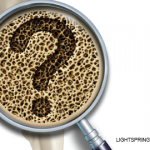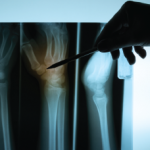NEW YORK (Reuters Health)—Routine osteoporosis screening in men is a good value and effective based on a cost-effectiveness model, researchers say.
“Osteoporosis is not just a disease for women. Osteoporosis affects many men (approximately 2 million in the U.S.), with significant morbidity, mortality, and costs that are projected to rise with the aging of the U.S. population,” Dr. Smita Nayak, of the Swedish Center for Research and Innovation at Swedish Health Services in Seattle, Wash., told Reuters Health by email.
“Approximately one in four men will sustain a fragility fracture after age 50, and one in three men over the age of 65 who sustain a hip fracture die within one year after fracture,” Dr. Nayak noted.
According to the U.S. Preventive Services Task Force, there is insufficient evidence to assess the harms and benefits of osteoporosis screening in men.
Dr. Nayak and coauthor Dr. Susan Greenspan, of the University of Pittsburgh School of Medicine in Pennsylvania, sought to identify the most cost-effective and effective osteoporosis screening tool for men over age 50.
They developed a model to assess the cost-effectiveness of dual-energy x-ray absorptiometry (DXA), the Osteoporosis Self-Assessment Tool (OST), or a 10-year absolute fracture risk assessment for osteoporosis screening in men compared to no screening.
The models assumed screening at ages 50, 60, 70 or 80 years with five- or 10-year intervals. The model also accounted for treatment with bisphosphonates with a positive screen, osteoporotic fractures, need for a nursing home, treatment adverse events, and death.
In 50-year-old men, the model predicted 23.6% without screening would develop a major osteoporotic fracture, most commonly of the hip.
The model predicted risks comparable with published risks, the authors said online Feb. 10 in the Journal of Bone and Mineral Research.
Using base-case analysis, they found that no screening was less effective and more costly than methods using OST or DXA. Further, screening initiated at age 50 and repeated every 10 years was associated with a $40,546 per quality-adjusted life-year (QALY) cost-effectiveness ratio and led to twice as many men receiving bisphosphonate treatment.
Fracture risk assessment screening started at age 50 and repeated every 10 years with an assumed willingness-to-pay of $50,000/QALY or $100,000/QALY was more effective in one-way sensitivity analysis. This was also found for DXA at age 50 and repeated every five years and fracture risk assessment at age 50 and repeated every five years.
“Our cost-effectiveness analysis of different osteoporosis screening tests, initiation ages, and repeat screening intervals for men aged 50 years and older found that many evaluated strategies are effective and cost-effective,” the researchers conclude.

